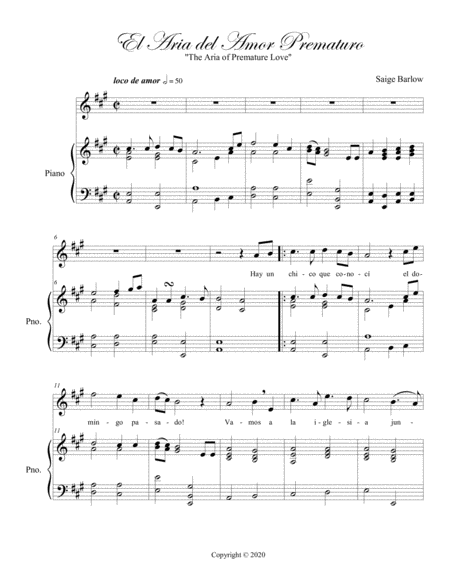Soprano voice,Vocal Solo - Level 4 - Digital Download SKU: A0.1011991 Composed by Saige Barlow. Contemporary. 4 pages. Saige Barlow #5794145. Published by Saige Barlow (A0.1011991). This stand-alone aria is a written in Spanish, poking fun at the stereotypical culture of young women in the Church of Jesus Christ of Latter-Day Saints. In this song, a young woman meets a handsome boy her age at church, and she immediately falls head over heals for him. However, he is already popular among the other girls as well, and she has not yet reached the age of sixteen, the age of which the youth are advised to start dating. Having recognized these factors, the young woman is devastated and loses hope for their relationship.
